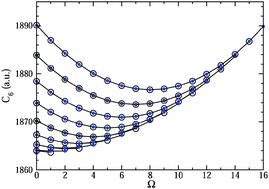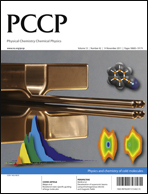Anisotropy in the interaction of ultracold dysprosium
Abstract
The nature of the interaction between ultracold atoms with a large orbital and spin angular momentum has attracted considerable attention. It was suggested that such interactions can lead to the realization of exotic states of highly correlated matter. Here, we report on a theoretical study of the competing anisotropic dispersion, magnetic dipole–dipole, and electric quadrupole–quadrupole forces between two dysprosium atoms. Each dysprosium atom has an orbital angular momentum of L = 6 and a magnetic moment of μ = 10 μB. We show that the dispersion coefficients of the ground state adiabatic potentials lie between 1865 a.u. and 1890 a.u., creating a non-negligible anisotropy with a spread of 25 a.u. and that the electric quadrupole–quadrupole interaction is weak compared to the other interactions. We also find that for interatomic separations R < 50a0 both the anisotropic dispersion and magnetic dipole–dipole potential are larger than the atomic Zeeman splittings for external magnetic fields of order 10 G to 100 G. At these separations the atomic angular momentum can be reoriented. We finish by describing two scattering models for these inelastic m-changing collisions. A universal scattering theory is used to model loss due to the anisotropy in the dispersion and a Born approximation is used to model losses from the magnetic dipole–dipole interaction for the 164Dy isotope. These models find loss rates that are of the same order of magnitude as the experimental value.

- This article is part of the themed collection: Physics and chemistry of cold molecules

 Please wait while we load your content...
Please wait while we load your content...